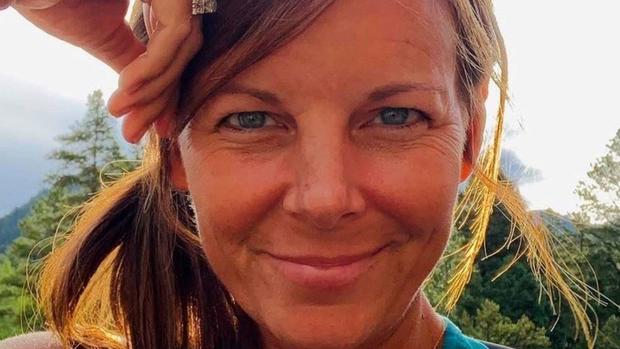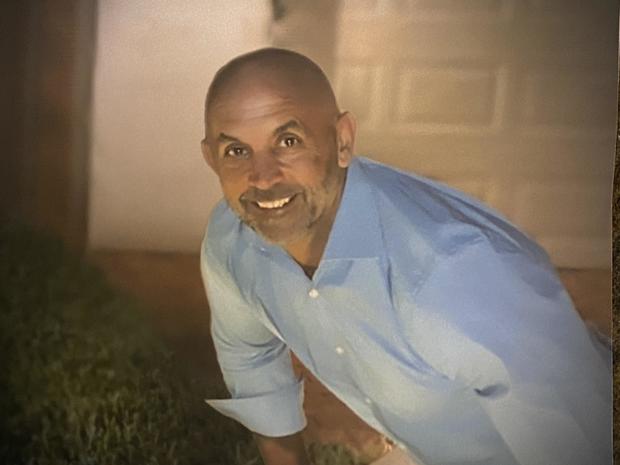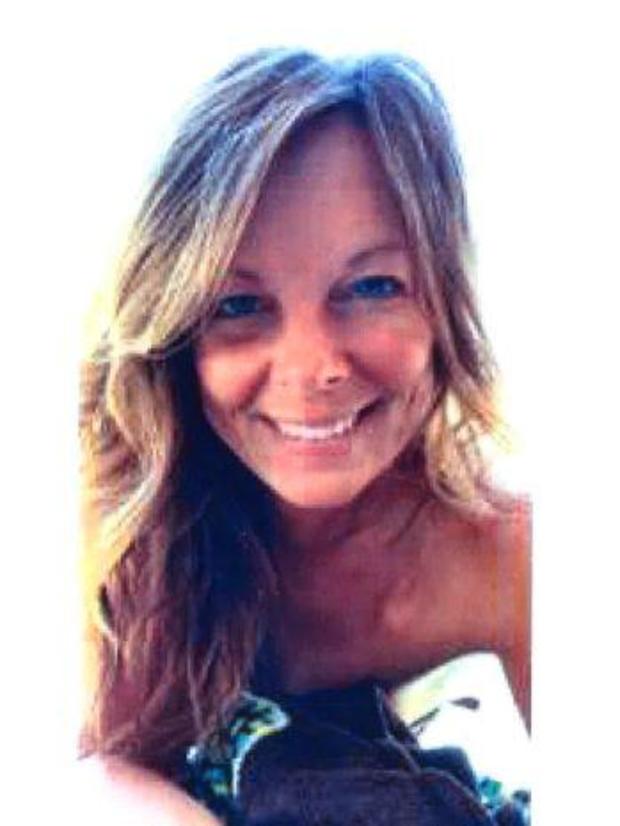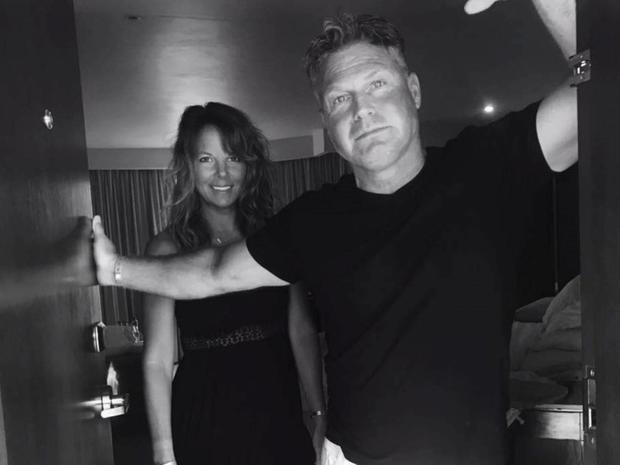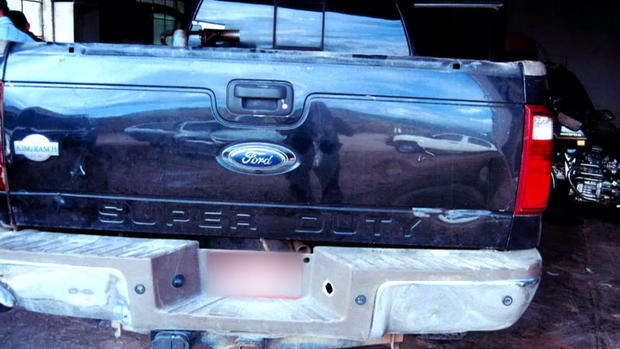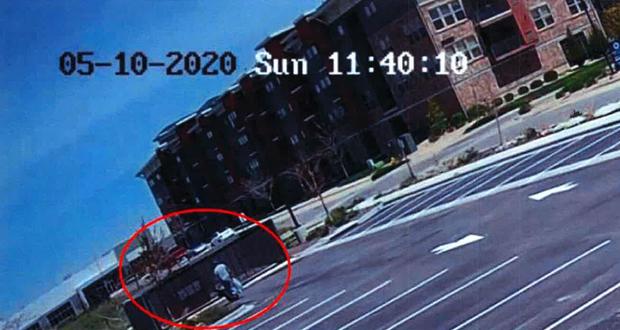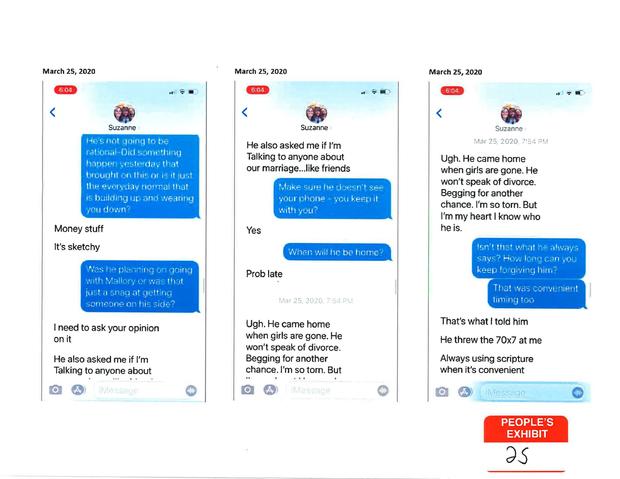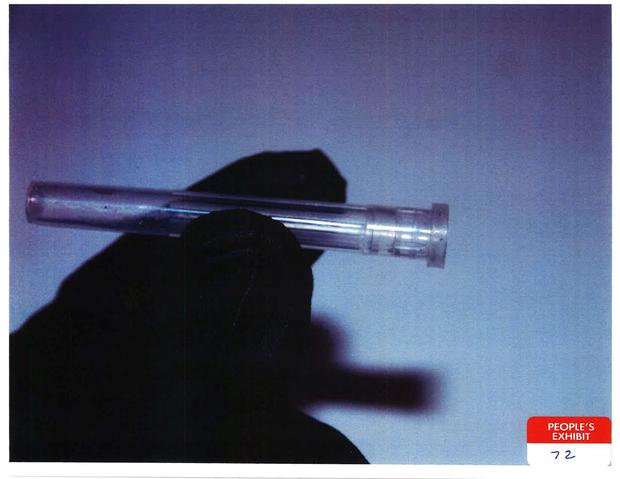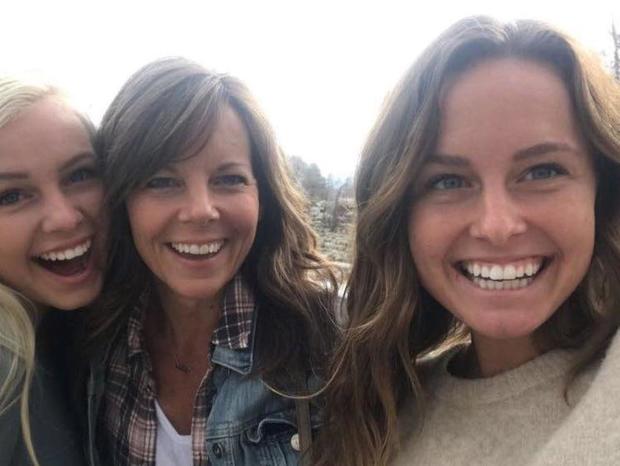[ad_1]
[This story previously aired on April 30, 2022. It was updated on July 1, 2023.]
This past week, a prosecutor working on the case of Suzanne Morphew, a missing mother of two, said in open court that investigators suspect they know the location of her body. “She is in a very difficult spot,” said Deputy District Attorney Mark Hurlbert. “We actually have more than just a feeling … and the sheriff’s office is continuing to look for Mrs. Morphew’s body.”
It was a major update in the Morphew case which began on Mother’s Day 2020, when she disappeared from her Colorado home. Hurlbert said there was no timetable for bringing a murder case to trial. “That could be a long time. It could be quick, it could be long. It depends on a lot of our investigation,” he said.
When Suzanne first went missing, investigators compiled and followed several bizarre clues—a chipmunk alibi, a tranquilizer gun, and a spy pen—but lacked direct evidence.
Suzanne Morphew/Facebook
Investigators noticed Barry’s cell phone appeared to be pinging all around his house on Mother’s Day weekend 2020, which he maintains was because he was chasing and shooting at chipmunks. Investigators also found a plastic cap for a syringe that they believe was used to load a tranquilizer dart in the couple’s dryer. Barry, investigators say, told them he didn’t know how the cap got there, but admitted he was an experienced tranquilizer dart gun shooter. The cap, however, did not contain any of Barry’s DNA.
Investigators also found a spy pen right out of a James Bond movie that was able to capture and record conversations. The pen captured several intimate conversations between Suzanne and a secret lover. Investigators also uncovered DNA on the glovebox of Suzanne’s Range Rover, which traced back to an unknown male connected to three sexual assaults.
MISSING ON MOTHER’S DAY
Dan Ridenour [riding in car with Peter Van Sant]: What happened on this road is a real mystery. No one knows. Where is Suzanne?
In the days, weeks and months after Suzanne Morphew was reported missing on Mother’s Day 2020, her trail went cold, but the mother of two’s disappearance had become the biggest story in Colorado.
ANDREW MOORMAN [talking to searchers, CBS Denver news report]: We’re gonna fan out and were gonna work that area very carefully, OK?
Four months in, Suzanne’s brother, Andrew Moorman, organized a citizen’s search. He said he felt he had to do something — anything.
ANDREW MOORMAN [to CBS Denver]: I hope to find her alive and at some point, you have to realize when somebody’s been missing after so long, that the chances of that diminish dramatically.
The thought that Suzanne may have been abducted hit the peaceful, picturesque town of Salida hard.
Dan Ridenour: I came home every day and my wife asked me, “had they found her yet?”
Dan Ridenour has covered the story for his local morning show.
Dan Ridenour: Barry and Suzanne Morphew were not known well in Salida, Colorado …They had only been here for a couple of years.
Suzanne Morphew/Facebook
Before moving to Colorado in 2018, Barry and Suzanne grew up in the small town of Alexandria, Indiana, where they met in high school. Suzanne competed for homecoming queen. Barry was a star baseball player who was drafted by the Toronto Blue Jays. Injury ended Barry’s dreams of a major league career. They both attended Purdue University and married in 1994. He started a landscaping business. Suzanne taught middle school before becoming a full-time mother.
Dan Ridenour: They had a couple of daughters … one in college … And they had a daughter in high school …
Macy, 16 years old when her mom disappeared, lived at home. Her sister Mallory attended college and the Morphews told some friends they moved to a home just outside of Salida to be closer to their older daughter. But there were also rumblings about the state of the Morphew’s marriage.
Dan Ridenour: Maybe a new place, a new — home, new scenery around them … would strengthen their family and therefore strengthen their marriage.
But the move did not appear to improve the relationship. It was a tough time, says her sister Melinda Moorman.
Melinda Moorman: My sister had sent me a text message … It was very lengthy. It was very powerful. It was very revealing.
In a Zoom interview, Melinda said she received Suzanne’s text two days before she disappeared, and it was boiling over with anger toward Barry.
The text read in part: “He’s also been abusive emotionally and physically… I feel more angry now. Anger at what I’ve allowed.”
Melinda Moorman: Barry was very dominant in the relationship, and my sister was a very passive, gentle soul … he had … a great tendency to overpower, intimidate people to get what he wanted.
Peter Van Sant: And what kinda boss was he?
Cody Cox: You know, he was real quiet … stern … He knew what he was doin’, ’cause that’s what he did in Indiana.
Cody Cox was part of Barry’s landscaping crew for nearly two years when Barry first arrived in Colorado.
Cody Cox: I talked pretty highly about Barry ’cause I was with him all the time. And he’s like, an inspiration to me almost … he was a real cool guy.
Cody said he regularly heard Barry talking to Suzanne as they drove in Barry’s truck.
Cody Cox: : … they seemed to communicate pretty well. Like I said, I could hear almost every phone call he had.
And he says he met Suzanne a handful of times; she even made cookies for his wife and kids.
Cody Cox: She was a sweetheart. She was a real kind lady … She’s almost like an angel, like somethin’ you’d see off a Hallmark movie, you know … real nice, almost too perfect.
Cody Cox: So, when I heard about the news, I didn’t believe it … I heard it actually on the radio. And I was like, “Did they just say Suzanne?” And I was like, “Oh my gosh. Who’d even wanna hurt her?”
The first day authorities searched for Suzanne, they found her mountain bike close to the Morphew home.
Peter Van Sant [at ravine]: Where was the mountain bike found?
Dan Ridenour [pointing]: It was found right over this little cliff right here resting on these boulders.
Chaffee County District Court
Dan Ridenour: She was new at mountain biking. So, an accident is certainly plausible. I would only ask, “Where’s Suzanne?”
Peter Van Sant: She would have been injured, yeah?
Dan Ridenour: She would have been injured.
Peter Van Sant: Was there clothing found down here?
Dan Ridenour: No.
Peter Van Sant: Was her helmet found down here?
Dan Ridenour: No.
Investigators believe the scene was staged and, days later, they discovered Suzanne’s helmet roughly a mile away off Highway 50.
Dan Ridenour [riding in car]: The helmet was found on the south side of the road.
Peter Van Sant: So, this side of the road?
Dan Ridenour: Which would be to our left.
Peter Van Sant: So, is the thought somebody threw it out of a window, perhaps?
Dan Ridenour: That’s the thinking, yes …
It appeared as though Suzanne could have been abducted, and that’s when Barry made a videotaped public plea on social media. In those early days, Barry had a theory about what happened to Suzanne that he shared with Tyson Draper who has his own YouTube channel.
BARRY MORPHEW: Where are you from?
TYSON DRAPER: I’m from Arizona.
BARRY MORPHEW: OK.
BARRY MORPHEW: Let me tell you what happened.
TYSON DRAPER: OK.
They happened to meet at the site where Suzanne’s mountain bike was found and Tyson secretly videotaped Barry:
BARRY MORPHEW [to Draper]: The first night there was a mountain lion that officers seen that walked by the car. So, we thought that maybe she got attacked by a lion.
A mountain lion killed her?
Dan Ridenour: If that happened, there would have been signs of that … There would’ve been blood, there would’ve been a struggle … So, that was a very short-lived speculation.
Authorities began to doubt that Suzanne even took a bike ride, especially after her sunglasses and hydration backpack were found in her car. Investigators also found her driver’s license and credit cards in her Range Rover. But her cell phone was missing.
Peter Van Sant: Did Barry Morphew cooperate with investigators during the course of this?
Ashley Franco: He had been interviewed by investigators through the course of it and he talked to investigators almost every time.
Ashley Franco, who reported on the case for the CBS affiliate in Colorado Springs, KKTV, has read the police documents and she says Barry has repeatedly told the same story. He came home around 3 p.m. on May 9, 2020 and had a pleasant evening with Suzanne. The next morning, Mother’s Day, Barry says he drove to a job some 3 hours away.
Ashley Franco: He says the last time he sees his wife is when she’s sleeping in their bed.
As investigators began trying to verify Barry’s alibi, they were pulled in a new direction. Suzanne’s spy pen had surfaced with that intimate conversation. Now they needed to figure out the identity of “Jeff,” Suzanne’s lover.
Ashley Franco: Could this man have had something to do with Suzanne’s disappearance?
SUZANNE’S SECRET LOVER IDENTIFIED
It was just days after Suzanne Morphew went missing when investigators make that intriguing discovery.
Aya Gruber: They discover a spy pen.
Peter Van Sant: A spy pen?
Peter Van Sant: A spy pen.
Aya Gruber is a law professor and a former defense attorney. She has closely studied all the public investigative files in the Morphew case; she knows it was not easy for investigators to find Suzanne’s secret lover: a man named “Jeff.”
Aya Gruber: She hid that affair so well that it took … agents six months to find the man she was having an affair with.
“Jeff” turned out to be Jeff Libler and he had a wife and six children in Michigan where he lived. He and Suzanne had a one-time fling after high school. Decades passed until Suzanne reached out to Jeff, out of the blue, in 2018.
Ashley Franco: When Suzanne and Barry moved to Colorado, Suzanne messaged him on Facebook.
Peter Van Sant: And what did she message him?
Ashley Franco: “Howdy Stranger.” … And from that moment they had talked almost every single day nonstop.
In the months after Suzanne went missing, Jeff kept quiet. He only began cooperating after he was located by investigators, who learned Jeff had taken steps to hide the nearly two-year affair.
Aya Gruber: What he did was delete all his social media accounts that he had used to communicate with Suzanne. … He’s got a lot to lose if revelations of this affair come out.
Jeff told agents he only took those steps because he did not want to tarnish Suzanne’s memory and worried he might lose his family and job. He was also worried agents considered him a suspect.
Aya Gruber: … he asks the agents, “Am I a target?”
Although he did not come forward on his own, Jeff did assist agents after they found him. He agreed to provide access to his DNA, phone records and his passwords for those deleted accounts. By looking through the couple’s iCloud accounts and phone records, agents were able to piece together their relationship, including the times they met in person.
Ashley Franco: Investigators also found that Suzanne, on several instances, had gone on vacation to meet up with Jeff in many different states, ranging from Louisiana to Florida.
Investigators also discovered they’d sent intimate photos to each other, talked of becoming husband and wife, and even mentioned leaving the United States.
Ashley Franco: Jeff and Suzanne had talked about moving away … moving to Ecuador at one point …
Peter Van Sant: If you were an investigator instead of a law professor, what would you wanna know about this Jeff Libler?
Aya Gruber: Everything. I’d wanna know everything about what he was doing, what he was thinking. … Here is somebody who arguably had the last communication … with Suzanne before she went missing.
The love affair between Suzanne and Jeff became a key part of the investigation as agents tried to figure out what happened to her on that Saturday, May 9, the day before Mother’s Day.
Records show that Suzanne and Jeff messaged each other 59 times that day, much more than usual, authorities say.
Chaffee County District Court
At one point, Suzanne sends Jeff a selfie. Investigators dub it her last “proof of life” photo. Barry was not home, as the lovers’ texts heat up:
At 2:05 p.m., Suzanne writes: “I’m just in love with you. Whatcha up to?”
Jeff’s response at 2:06 p.m. was: “Want to strip down and get naked? LOL??”
She responds by saying she’ll “load up” her WhatsApp account and then at 2:11 p.m., Suzanne writes, “Okay I’m on WA”.
Then, at 2:26 p.m., Suzanne gets a text from Barry that he’s heading home. “Done headed back.”
No one knows if Suzanne saw that text or was preoccupied with Jeff, but she does not answer.
Barry follows up, appearing to wonder where Suzanne is. “Did you leave?”
There was still no response from Suzanne and investigators speculate the next few moments are when Barry returned home. They notice that Barry’s cell phone appears to be pinging all around the outside of his house. Was he chasing Suzanne before a final and fatal confrontation?
Investigators asked Barry to explain that unusual phone activity.
Aya Gruber: And he says, “Well, lemme think about that. I was probably walking around my house shooting chipmunks.”
You heard right — it was perhaps the world’s first chipmunk alibi. Barry says the chipmunks were a constant nuisance at his house and he’d been running around shooting them that day.
Aya Gruber: And then that confession to shooting chipmunks becomes a major piece of incriminating evidence against him.
There was no evidence of any chipmunk shootings around Barry’s house. Part of his problem, Aya says, is that Barry granted between 30 and 40 interviews — all without a lawyer — to everyone from a county detective to members of the FBI.
Peter Van Sant: Would you have allowed him to do all these interviews?
Aya Gruber: No. Absolutely not.
Meanwhile, Jeff Libler was cleared. He told agents he was in Michigan that weekend and his alibi checked out. When investigators tell Barry of the affair, he denies knowing anything about it.
Suzanne Morphew/Facebook
But if Barry knew nothing about Suzanne’s affair, what motive would he have to kill her? One clue may be a deleted text that investigators found on Barry’s phone sent by Suzanne just days before: “I’m done. I could care less what you’re up to and have been for years. We just need to figure this out civilly.”
Dan Ridenour: So, the only thing that makes sense is that Barry Morphew lost it when Suzanne finally said, “I’m leaving you.”
Barry knew that his daughters would be away on their camping trip that Saturday afternoon and authorities say he took advantage of that opportunity to kill Suzanne and clean up the crime scene.
Peter Van Sant: From 2:47 p.m. until 10:17 p.m., just under 8 hours, Barry’s phone goes into airplane mode. What do authorities believe happened during that time?
Ashley Franco: Authorities say that they believe, when his phone went into airplane mode, that he was disposing of possible evidence.
Unable to track Barry’s cell phone, investigators tapped into a relatively new investigative technique — digital vehicle forensics — to pull a stream of data out of Barry’s Ford truck. And Barry’s truck told a different story than what he was telling investigators.
Ashley Franco: They were using Barry’s own car against him.
IF A TRUCK COULD TALK — IN THIS CASE, IT DID
Ben LeMere is an expert in the new field of vehicle forensics.
Peter Van Sant: Give me a sense of how your technology, from your company, helps solve criminal cases.
Ben LeMere: So, a lotta times it’s used to … locate bodies.
LeMere is the CEO of the Berla Corporation.
Ben LeMere: It helps … get people convicted. It’s helped get people not convicted.
Investigators from Scotland Yard to the FBI have learned how to use Berla’s software to tap into the dozens of computers in a car.
Peter Van Sant: It’s accurate enough to be used as evidence in court cases, correct?
Ben LeMere: Yes, sir.
Cases like the disappearance of Suzanne Morphew. Investigators created a Berla report, meaning they tapped into the data in Barry’s Ford truck to track its movements after his cell phone went into airplane mode.
Aya Gruber: … a couple of the pieces of evidence that I think are very harmful to his case — come from the data in the car …
Ashley Franco: The prosecution’s case is that Barry snapped at one point the day before Mother’s Day.
Chaffee County District Court
Authorities believe Barry killed Suzanne that afternoon. He told agents he went to bed around 8 p.m. that night, but the data pulled from the truck shows that the truck was put in reverse and moved some 96 feet closer to his house around 9:30 p.m.
Ashley Franco: Investigators think that’s when he could have loaded Suzanne’s body.
Initially, Barry told police that he set his alarm for 4:30 a.m. on Mother’s Day and left the house by 5 a.m. to drive to a job site in Broomfield, a town near Denver, 150 miles from Salida. But the truck’s computers show that someone was opening and closing the truck’s doors around 3:30 a.m.
Investigators believe Barry began driving toward Broomfield much earlier than he claimed, but there is a 4-hour window—approximately 4 a.m. to 8 a.m.—when no activity was recorded by the vehicle’s computers.
Aya Gruber: … there are events in the car — that aren’t recorded. So, they can’t give sort of a full chronological picture.
And if Barry hid Suzanne’s body during that 4-hour window, the truck’s data does not provide answers.
Peter Van Sant: Why is data missing sometimes?
Ben Lemere: Well, it gets overwritten. You know, it is a computer … Log files, they only last so long.
But Barry helped fill in some of the missing data. He told agents he took a left upon leaving his home instead of a right because, even though it was dark, he remembered seeing some elk.
Ashley Franco: He saw a herd of elk, and he’s a hunter. So, he was interested, and he wanted to get an up-close look.
That admission was significant to agents because it put him in an area where a key piece of evidence had been recovered.
Ashley Franco: Investigators found Suzanne’s bike helmet up that road. So, they believe, at that point when he turned left instead of turning right, that he could have been ditching her bike helmet.
At 8:10 a.m. on Mother’s Day morning, the truck’s computers again begin recording data. And by then, Barry’s cell phone had also come back to life. Agents are able to track Barry’s cell and truck movements and can see that he first pulled over at a Broomfield bus stop where he discarded something in a garbage can.
Ashley Franco: And then he moves on to a hotel trash can, a McDonald’s trash can … a dumpster … in a Men’s Wearhouse parking lot, and then back to the hotel, and dumps stuff in a dumpster there. Investigators believe that during these “trash runs,” he was disposing of evidence in different places within the Denver area.
Chaffee County District Court
In a surveillance shot of Barry on one of those trash runs, investigators could not see what he was throwing away. It may have looked incriminating, but Barry claims it was just another day at the office. He told agents he was merely being cheap, not criminal.
Peter Van Sant: And his claim, well, I just always have a lotta junk in — in the vehicle. I don’t like to pay to have it — disposed at a landfill, I — this is just what I do.
Ashley Franco: But it’s suspicious that you would go to five different trash areas to dispose of several things. Why not just do it at one?
After checking out the work site, Barry headed back to his room at the Holiday Inn, and investigators say he stayed there from 12:42 p.m. to 6:03 p.m. By then, he’d already spoken to older daughter Mallory who told him she could not get in touch with her mother.
That’s when the Morphew neighbors were contacted and could find no sign of Suzanne.
Dan Ridenour: Barry asked them at that time if the bike was there, to go check on her … her bicycle is not here.
Barry asks his neighbor to call 911.
Dan Ridenour: And that’s when the call to 911 … was placed, that Suzanne is missing.
Ashley Franco: Barry doesn’t head home immediately, and he is dropping some tools off for his coworkers.
Tools including a shovel. With Suzanne now officially reported missing, Barry tells his workers there’s a family emergency and arranges hotel rooms with one of those workers taking over Barry’s room.
Ashley Franco: When the employee was interviewed, he told investigators that … the room that Barry checked out of, it had a strong smell of chlorine or bleach.
Peter Van Sant: Which suggests what?
Ashley Franco: That he could be cleaning up a crime scene.
Just after 6 p.m., Barry starts driving back to Salida. On the way, Barry speaks to sheriff deputies who advise him they’ve found Suzanne’s bike and he arrives at that ravine at around 8:40 p.m.
Ashley Franco: And investigators say that when he arrived there, he was pretty emotional for a few minutes.
By Sunday night, Suzanne’s daughters were back home but Suzanne is nowhere to be found. Barry offered a $100,000 reward for information that was later doubled to $200,000.
Chaffee County District Court
Investigators later discovered many texts from Suzanne to a close friend that apparently revealed her tormented feelings about Barry:
“He won’t speak of divorce …”
“I feel no peace when he’s here …”
“I wouldn’t feel safe alone with him …”
Barry became the prime suspect and investigators think they know how he killed Suzanne.
DID BARRY TARGET SUZANNE?
While investigators searched the Morphew home and the family’s cars and trucks, Barry continued to talk, seemingly to anyone with a badge. Weeks and months went by and Barry remained at the center of the investigation.
Aya Gruber: … police are absolutely correct as a statistical matter to look at intimate partners … when they suspect that a woman might’ve been harmed or murdered.
Peter Van Sant: It’s something like eight out of 10 times, when a spouse dies the other one’s involved.
Aya Gruber: Absolutely.
Sometimes the smallest item will turn an investigation, and, in this case, agents seized on a clear plastic cap that a forensics team had found in the family’s dryer. Prosecutors believe the cap was from a syringe used to fill a tranquilizer dart.
Chaffee County District Court
Peter Van Sant: How do prosecutors interpret that?
Aya Gruber: The prosecution’s theory is that at some point, when Barry came home on the 9th and snapped, and decided to murder Suzanne, he used a tranquilizer dart that you would use on animals …
There was no working tranquilizer rifle found in the Morphew’s home. But Barry told investigators he was an experienced tranquilizer dart gun shooter. He knew how to load darts with paralyzing chemicals, having used them to illegally sedate deer and remove their antlers to sell.
Chaffee County District Court
We asked Dan Ridenour to read some of what Barry told investigators.
Dan Ridenour [reading]: Barry said, “The first thing I thought of when I came here and saw deer in my yard with big horns, I’m like, ‘I’m getting them horns.'”
Dan Ridenour [reading]: “And I’ll tell you exactly what I did … I shoot ’em. They go to sleep, I cut their horns off … It’s totally illegal … But you’re gonna find tranq darts around my property because I’ve done that.”
Experts say it can take between 4 and 20 minutes for an animal the size of a deer to drop after being shot with a tranquilizer dart. Agents theorized that Barry’s phone had pinged from various locations around the house—not because he was shooting chipmunks, but because he was chasing Suzanne after he shot her.
Ashley Franco: Investigators find a doorframe within the Morphew home that has been broken. And they say that there could have been a chase and then a struggle.
Andrew Katers, the owner and CEO of Animal Care and Equipment Services, showed us a tranquilizer rifle he’d typically use on animals.
Peter Van Sant: And what are you holding?
Andrew Katers: What I’m holding is a TeleDart model 706 rifle … they use this a lot in parks throughout the country.
Peter Van Sant: And this does not fire bullets or shot?
Andrew Katers: It only fires darts. … It’s impossible to — get it to do anything else.
Peter Van Sant: Could you now demonstrate for me?
Andrew Katers: Sure. [fires rifle]
Peter Van Sant: So, if Suzanne had been struck by one of these darts … would she have time to run around, try to escape?
Andrew Katers: She could. But I don’t think she would get very far.
Peter Van Sant: For a human being, it could be lethal.
Andrew Katers: For sure.
Bolstering the theory that Barry and Suzanne had a confrontation the day she disappeared were apparent scratches seen on Barry’s left arm. Agents took the circumstantial evidence they gathered — Barry’s apparently suspicious behavior, his contradictory statements, the puzzling data from his truck, Suzanne’s disturbing texts and those five trash runs — and brought it all to the district attorney.
On nearly the anniversary of Suzanne’s disappearance, Barry is arrested in May 2021.
NEWS REPORT: Tonight, the husband of Suzanne Morphew is behind bars accused of killing her. … The Chaffee County Sheriff’s Office says that Barry Morphew was arrested this morning.
Suzanne’s body has never been found and the prosecutors assume she’s dead. Despite the lack of a body, Barry was charged with first-degree murder, tampering with physical evidence, and a variety of other allegations. He was held without bail and eventually pleaded not guilty.
In their arrest affidavit, prosecutors spelled out what they believe happened to Suzanne:
“It had become clear that Barry could not control Suzanne’s insistence on leaving him and he resorted to something he has done his entire life — hunt and control Suzanne like he had hunted and controlled animals.”
Suzanne’s sister Melinda reacted to the news of Barry’s arrest.
Melinda Moorman: There are no winners in this story. There are two families who are suffering deeply.
Barry ultimately hired high-profile lawyers from Denver, and, in the summer of 2021, Judge Patrick Murphy heard the prosecution’s evidence in open court.
Ashley Franco: He decided to hold a preliminary hearing to see if this case had enough evidence to go to trial.
The defense tried mightily to blunt the state’s case, countering that the clear, plastic cap found in the dryer means nothing because no one could say how long it had been there. Furthermore, Suzanne’s DNA was found on the cap, not Barry’s. And as for that chlorine smell in Barry’s hotel room …
Aya Gruber: One of the managers from the Holiday Inn had actually communicated to agents that this smell of chlorine existed before Barry Morphew was there … because that room’s directly above an indoor pool.
And there was one more crucial issue the prosecution had to deal with — one that its own forensic team uncovered. DNA evidence made public for the first time now threatened to destroy the case against Barry.
Aya Gruber: This DNA discovery is so significant. The agents swab the inside of Suzanne Morphew’s car and they found male DNA on the glove box, and it wasn’t Barry Morphew’s DNA. He was eliminated.
The DNA also did not match Suzanne’s lover Jeff Libler. But it did partially match the DNA of an unknown male who had attacked other women and it raised a disturbing question: had Suzanne fallen into the hands of a sexual predator?
DA: AUTHORITIES ARE “CLOSE” TO FINDING SUZANNE’S BODY
In September 2021 at the Chaffee County Courthouse in Salida, Judge Patrick Murphy heard arguments about whether there was enough evidence to try Barry Morphew for murder.
Ashley Franco: The judge named off three different scenarios, saying, “Suzanne Morphew left willingly, Barry Morphew could have killed his wife, or someone else abducted Suzanne and killed her.”
He said it was “unlikely” Suzanne had run off on her own, even though she and lover Jeff Libler had discussed moving to Ecuador.
Ashley Franco: The judge says that because of the evidence that’s … been presented about how loving Suzanne was toward her daughters and toward her family … that she could never do that.”
Chaffee County District Court
But the abduction theory could not be so easily dismissed — especially after that mysterious DNA was found in Suzanne’s Range Rover. Investigators learned that DNA at least partially matched the profile of an unnamed man connected to three unsolved sexual assault cases in Tempe, Phoenix and Chicago.
Peter Van Sant: So how can that DNA end up in her car?
Aya Gruber: Well, that DNA can end up in her car if she was the victim, for example, of a serial killer … or if the person was hired or opportunistic … There could also be potentially an innocent explanation that at some point, you know, the person came in contact with the car randomly as a mechanic … but it is very, very curious.
Peter Van Sant: Barry Morphew can stand up and say, “I’m not your killer. The man whose DNA is in my wife’s car, tied to past sexual assaults, that’s your killer.”
Ashley Franco: Barry Morphew absolutely could say that. And that’s what his defense is banking on in this case.
In frank language, Judge Murphy gave his opinion of the state’s evidence: “I find that the proof is not evident nor is the presumption great that Mr. Morphew committed first-degree murder.”
Despite that, the judge ruled there was probable cause to go to trial.
Aya Gruber: But this judge was very careful to say, “Look, I’m finding probable cause here, but it’s only because I am looking at all the evidence in the light most favorable to the prosecution.”
Murphy said he was “obligated” to set bond for Barry.
Ashley Franco: The judge sets $500,000 cash-only bond.
Peter Van Sant: And are they monitoring him in some fashion?
Ashley Franco: Barry Morphew is wearing an ankle monitor for them to track him, to make sure that he is staying in Chaffee County.
KKTV
A few days later on September 20, 2021, Barry Morphew and daughters Mallory and Macy are all smiles as they leave the jail. They stand firmly behind their dad. Barry declined “48 Hours”‘ request for an interview.
Barry Morphew’s homicide trial was to begin on April 28, 2022, but in the months leading up to that date Judge Murphy recused himself and and was replaced by Judge Ramsey Lama.. And Barry’s defense team, led by attorney Iris Eytan, filed motions asking that prosecutors be sanctioned for “failing to produce discovery in a timely manner” including some potentially exculpatory evidence — like the male DNA found in Suzanne’s Range Rover.
Iris Eytan: There’s DNA that is placed on all the critical items of evidence in this case — on the bike, on the bike helmet, in the house, in the car — that is linked to unknown males.
In April 2022, Judge Lama ruled that prosecutors repeatedly had missed deadlines and had failed to turn over important information in the discovery phase. The judge wrote that while he did not find those actions “willful … the court does find this pattern to be negligent, bordering on, reckless.” The judge’s penalty was to knock out 14 prosecution witnesses — including experts in DNA and cell phone and vehicle data recovery. They would not, he said, be allowed to testify.
Law professor Aya Gruber said the case was going to be an uphill battle for prosecutors even before she heard about the most recent sanctions.
Aya Gruber: This case is incredibly unique. There are not many … murder cases — where the defendant has been charged with first-degree murder, where there is no body, no blood evidence of any foul play, no eyewitnesses.
On April 19, 2022, as a pre-trial hearing was about to begin, District Attorney Linda Stanley filed a motion to dismiss the murder charges against Barry Morphew without prejudice, meaning the case could be refiled at a later date. In her motion, the DA pointed to the court’s decision to bar “several key witnesses … without this crucial evidence and without the victim’s body, the People cannot move forward at this time in good faith.”
Neither Barry, his daughters nor his lawyer had any advance warning.
Iris Eytan: I didn’t know a dismissal was coming today, although the writing was on the wall …
In her motion for dismissal, Stanley told the judge that officials believe they are close to discovering the location of Suzanne Morphew’s body. Court papers specifically mentioned “a remote and mountainous region nearby the Morphew residence” that will be excavated after five feet of snow melts.
Dan Ridenour: Where is Suzanne Morphew’s body? That is the million-dollar question.
Remember, there was an approximate four-hour gap not recorded by the computers in Barry’s truck on Mother’s Day morning 2020. Whether investigators ultimately were able to recover some of that missing data or received a tip about the location of Suzanne’s remains is not known.
Dan Ridenour: The San Isabel National Forest, again, is 1.1 million acres. There’s plenty of places to dispose of — of a body.
Defense attorney Eytan denies Barry has any involvement in his wife’s disappearance.
Iris Eytan: Barry Morphew loves Suzanne Morphew. He loves her and he misses her, and he wants to know where Suzanne Morphew is.
KKTV
After the judge granted the motion to dismiss homicide charges against Barry, he walked out of court a free man, flanked as usual by his loyal daughters.
Suzanne’s sister Melinda says she agrees with the request to dismiss charges against Barry at this point. She said she hoped that, with more time, searchers will find Suzanne’s body and win “a solid conviction in her murder. This would dispel all rumors of her whereabouts.”
And whatever else happens with the case, Melinda says she hopes her nieces keep one thing in mind.
Suzanne Morphew/Facebook
Melinda Moorman: “Mallory, Macy … Your mother would have laid down her life for you girls … She would never leave you. She would never forsake you. She loved you with her whole being.
In May 2023, Barry Morphew filed a $15 million federal civil rights lawsuit against prosecutors and law enforcement officials stating he was wrongfully arrested, jailed and prosecuted.
Produced by Paul La Rosa. Elena DiFiore is the field producer. Stephen A. McCain is the development producer. Atticus Brady, Michael Baluzy and George Baluzy are the editors. Peter Schweitzer is the senior producer. Nancy Kramer is the executive story editor. Judy Tygard is the executive producer.
Trending News
[ad_2]
Source link

